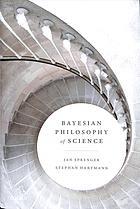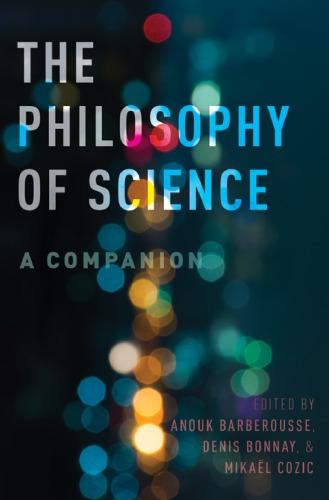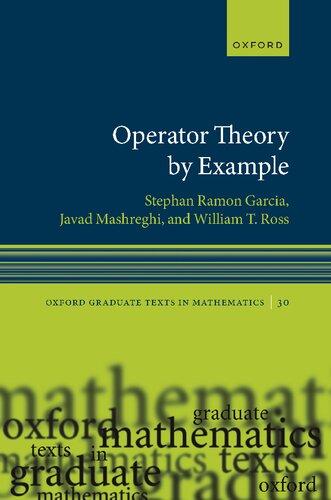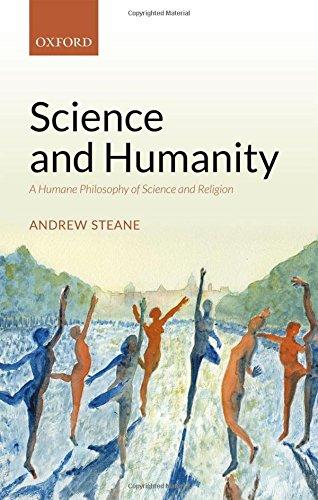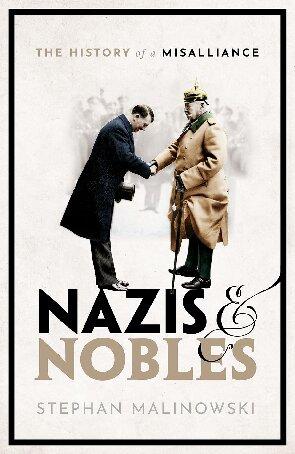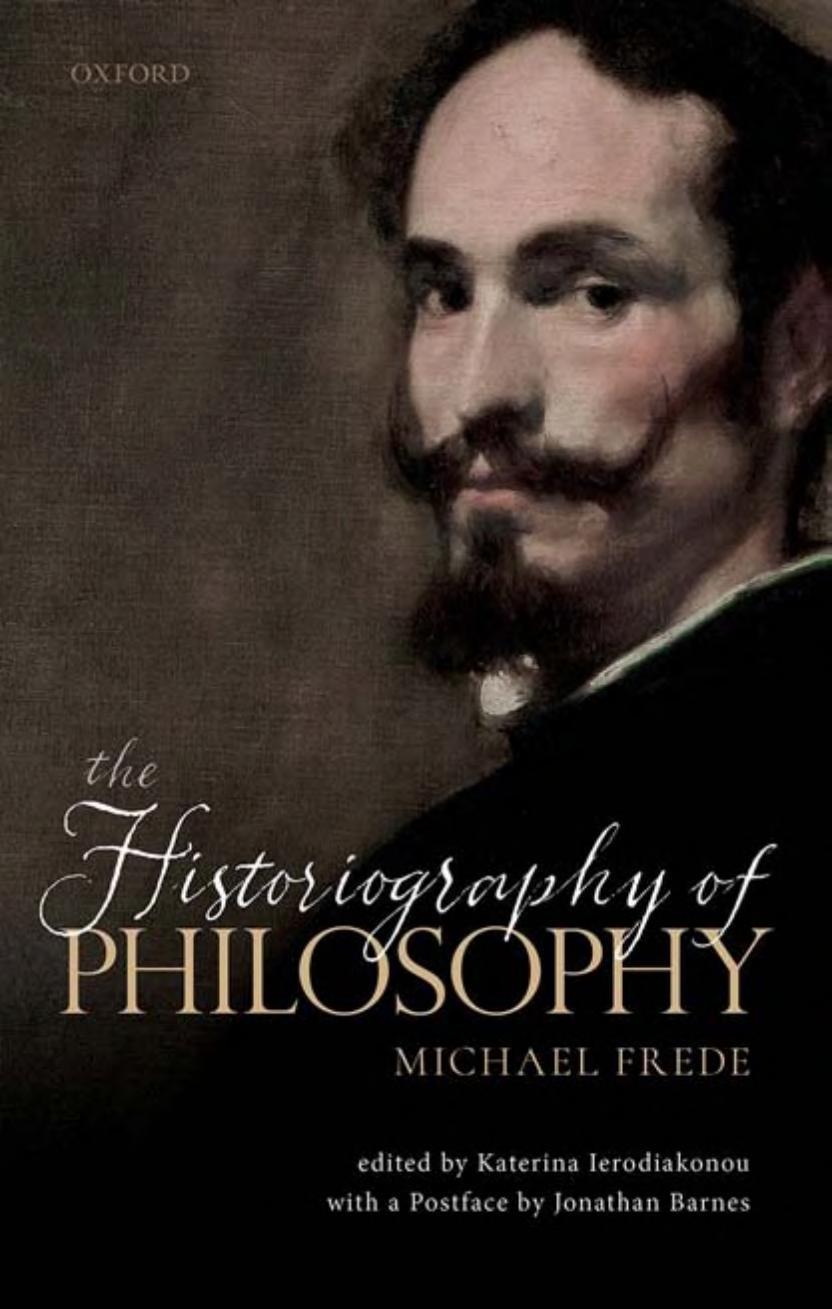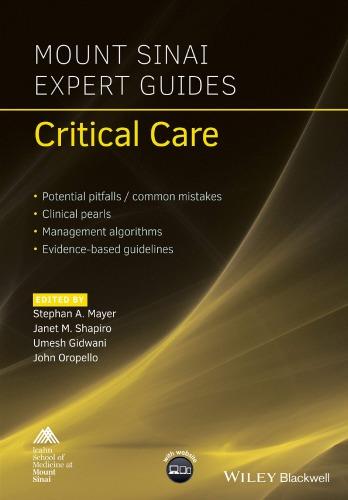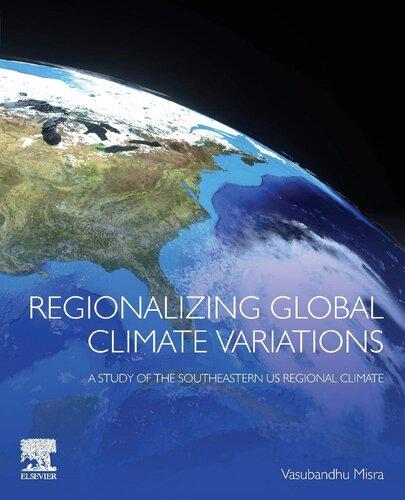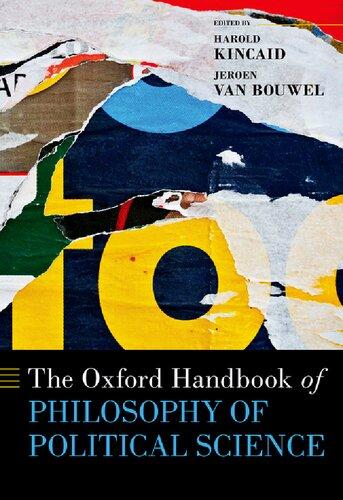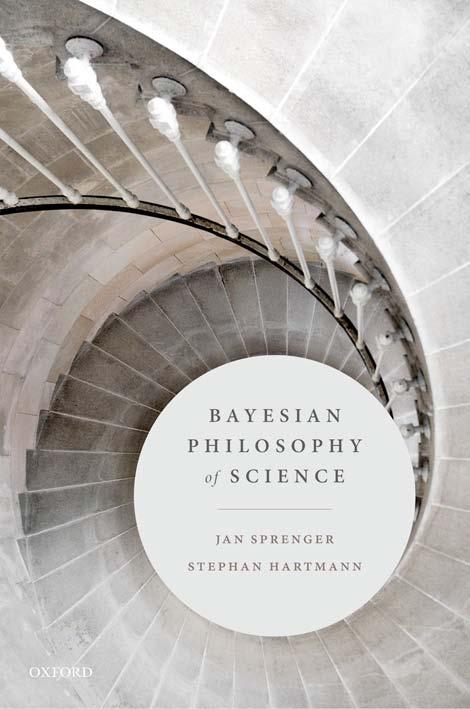Bayesian Philosophy of Science: Variations on a Theme by the Reverend Thomas Bayes 1st Edition Stephan Hartmann Visit to download the full and correct content document: https://ebookmass.com/product/bayesian-philosophy-of-science-variations-on-a-them e-by-the-reverend-thomas-bayes-1st-edition-stephan-hartmann/
More products digital (pdf, epub, mobi) instant download maybe you interests ...
The Philosophy of Science: A Companion Anouk
Barberousse
https://ebookmass.com/product/the-philosophy-of-science-acompanion-anouk-barberousse/
Operator Theory by Example 1st Edition Stephan Ramon
Garcia
https://ebookmass.com/product/operator-theory-by-example-1stedition-stephan-ramon-garcia/
Science and Humanity: A Humane Philosophy of Science and Religion 1st Edition Andrew Steane
https://ebookmass.com/product/science-and-humanity-a-humanephilosophy-of-science-and-religion-1st-edition-andrew-steane/
Bayesian Statistics for Beginners: A Step-By-Step Approach Therese M Donovan
https://ebookmass.com/product/bayesian-statistics-for-beginnersa-step-by-step-approach-therese-m-donovan/
Nazis and Nobles: The History of a Misalliance Stephan
Malinowski
https://ebookmass.com/product/nazis-and-nobles-the-history-of-amisalliance-stephan-malinowski/
The Historiography of Philosophy: With a Postface by Jonathan Barnes
Michael Frede
https://ebookmass.com/product/the-historiography-of-philosophywith-a-postface-by-jonathan-barnes-michael-frede/
Mount Sinai Expert Guides: Critical Care 1st Edition
Stephan A. Mayer
https://ebookmass.com/product/mount-sinai-expert-guides-criticalcare-1st-edition-stephan-a-mayer/
Regionalizing Global Climate Variations: A Study of the Southeastern US Regional Climate 1st Edition Vasubandhu Misra
https://ebookmass.com/product/regionalizing-global-climatevariations-a-study-of-the-southeastern-us-regional-climate-1stedition-vasubandhu-misra/
The Oxford Handbook of Philosophy of Political Science
Harold Kincaid
https://ebookmass.com/product/the-oxford-handbook-of-philosophyof-political-science-harold-kincaid/
BayesianPhilosophyofScience BayesianPhilosophyofScience VariationsonaThemebythe ReverendThomasBayes p(H|E)= p(H)
p(E|H) p(E)
GreatClarendonStreet,Oxford,OX26DP, UnitedKingdom
OxfordUniversityPressisadepartmentoftheUniversityofOxford. ItfurtherstheUniversity’sobjectiveofexcellenceinresearch,scholarship, andeducationbypublishingworldwide.Oxfordisaregisteredtrademarkof OxfordUniversityPressintheUKandincertainothercountries
©JanSprengerandStephanHartmann2019
Themoralrightsoftheauthorshavebeenasserted FirstEditionpublishedin2019
Impression:1
Allrightsreserved.Nopartofthispublicationmaybereproduced,storedin aretrievalsystem,ortransmitted,inanyformorbyanymeans,withoutthe priorpermissioninwritingofOxfordUniversityPress,orasexpresslypermitted bylaw,bylicenceorundertermsagreedwiththeappropriatereprographics rightsorganization.Enquiriesconcerningreproductionoutsidethescopeofthe aboveshouldbesenttotheRightsDepartment,OxfordUniversityPress,atthe addressabove
Youmustnotcirculatethisworkinanyotherform andyoumustimposethissameconditiononanyacquirer
PublishedintheUnitedStatesofAmericabyOxfordUniversityPress 198MadisonAvenue,NewYork,NY10016,UnitedStatesofAmerica
BritishLibraryCataloguinginPublicationData Dataavailable
LibraryofCongressControlNumber:2019941395
ISBN978–0–19–967211–0
Printedandboundby CPIGroup(UK)Ltd,Croydon,CR04YY
LinkstothirdpartywebsitesareprovidedbyOxfordingoodfaithand forinformationonly.Oxforddisclaimsanyresponsibilityforthematerials containedinanythirdpartywebsitereferencedinthiswork.
IchbineinEsel,undwillgetreu, wiemeineVäter,dieAlten, anderalten,liebenEselei, amEseltumehalten.
UndweilicheinEsel,soraticheuch, denEselzumKönigzuwählen; wirstiftendasgroßeEselreich, wonurdieEselbefehlen.
WirsindalleEsel!I-A!I-A!
WirsindkeinePferdeknechte. FortmitdenRossen!Eslebe—Hurra!— DerKönigvomEselsgeschlechte!
HeinrichHeine
FirstAuthor’sPreface Likemanythingsinlifethatyoudoforthefirsttime,writingabook istemptingandscaryatthesametime.Itisscarybecausethestakes arehigh:Aweakerjournalarticleoreditedvolumechapteriseasily pardonedbytheacademiccommunity.Itendsupnotbeingcitedand that’sit.Abook,however,ismeasuredbydifferentstandards:itis assumedthatyouhavewrittenitwithouthavingtosatisfycapricious referees,stressededitorsandstrictlengthandstyleconstraints.Itis supposedtoshowyourhighestlevelofphilosophicalthinking.(The analogueinmusicisperhapsthedifferencebetweenwritingapiano sonataandwritingasymphony—especiallywhenitisthefirst.We knowwellhowmucheventhegreatestcomposershavestruggled withthisstep!)Forpersonalitieslikeme,whotendtobeperfectionist andsloppyatthesametime,thismeansthatyouspendanendless amountoftimeonrevisionsandcorrections.Atsomepoint,then,the entireprojectfeelslikeanever-endingstoryandyouarejusthappyto completeitandtomoveontonewchallenges.
Atthesametime,writingabookisagreattemptation.Notonly becausehavingabundleofcaseboundpaperonyourdeskgivesa differentfeelingofrewardthanbeingnotifiedthatyourarticlehas beenpublishedonthejournal’shomepage.Writingabookissomethingthatallowsyoutoreflectonyourprofessionalcontributionsand achievements.Youcanputthemintoacontextthatallowsthereaders tograspthebiggerpictureandtoperceivethelinksbetweenthe differentpartsofyourwork.Whiletheprocesswasattimestedious andfrustrating,overallIenjoyeditverymuch.Ienjoyevenmorethat wehave—finally!—broughttheprojecttoasuccessfulconclusion.
Likewithmostyoungphilosophers,theideaofpublishinga bookwasbornwhenIwasabouttocompletemyPh.D.thesisin
philosophyofscienceonthetopic“ConfirmationandEvidence”. DifferentfromtheStates,publishingtheirPh.D.thesisasabookwas athingthatyoungGerman doctoresphilosophiae wereencouragedto doinordertolaunchtheiracademiccareer—atleastbackinthedays (2008).Mysupervisor,ProfessorAndreasBartelsattheUniversityof Bonn,expressedafavorableopinionandsuggestedtryingtopublish theworkwithMentis,awell-respectedGermanpublishinghouse. AlthoughthethesiswascertainlyfineforobtainingthePh.D.,and althoughitcontainedseveralnewideasandresults,Ifeltthatit wasnotcoherentandmatureenoughtosurviveasabook.Rather Ihopedthatthemoreinterestingchapterscouldformthecoreofa differentbook.Sotheworkdisappearedintheproverbialfiledrawer, thatis,theinternetsiteofthe Universitäts-undLandesbibliothekBonn (ulb).(Makingthecontentspubliclyaccessible,atleastinelectronic form,wasarequirementfortheawardofthePh.D.)Leavingthe GermanacademicsystemandtakingupapostatTilburgUniversity intheNetherlandshelpedmetomakethatdecision.Istillthinkit wasright.Toomanypretentiousphrasescenteredaroundpointsof marginalgeneralinterest,orasStephanHartmannlikestosayin similarcontexts,“calculationdetailsfortheumpteenthepicycleofthe Ptolemaicsystem”.Ifyouare,likeme,ayoung,callowandslightly overconfidentphilosopherofscience,thenIinviteyoutosearchfor theworkonthe ulb’ssiteandseewhetherthereareparallelstoyour ownPh.D.thesis.
YearslaterStephanandIstartedtoworkonthisbook—anoutlineandarésuméofphilosophyofscienceconductedwithBayesian models.Tomysurprise,eventhemoreoriginalandsignificantparts ofmythesis—thecontributionstothetheoryofH-Dconfirmation andstatisticalinference—eventuallydroppedoutofthepicture.“Ein schönesLied,einMeisterlied,/wiefass’ichdadenUnterschied?”asks WalthervonStolzinginwhatisperhapsthemostinspiredsceneof RichardWagner’s MeistersingervonNürnberg.Withtheabovedistinction,Walther’sconversationpartnerHansSachsisalludingtothefact thatcreativityandinspiration(“einschönesLied”)arenotsufficient formakingalastingcontributionthatmeetscertainconstraintsand reapswidespreadapplause(“einMeisterlied”).Withthehelpofthe experiencedSachs,Waltherfinallymanagestocondensehistalent
andenthusiasmintoapiecethatisalsoapprovedbytheconservativeNurembergmastersingers.Ithinktheprocessofdeveloping philosophicalideasandgivingthemformissimilar.Itisuptothe reader’sjudgmentwhetherwehavesucceededatthistask,butitwas ourambitiontobalanceaccessibilityfornon-specialistsandpleasing proportionswithnovelandinspiringcontributions.Itthendawned uponmethatsomeofthecontentswhichweredeartomyheartand whichIwasplanningtoincludeinthebookmightratherbeomitted.
Thebookisalsoabalanceofmylong-standingfriendshipand productivecollaborationwiththeotherauthor,StephanHartmann, whowasmymentoranddirectsuperiorduringfiveyearsinTilburg (2008–2013).AsdirectoroftheTilburgCenterforLogicandPhilosophyofScience(tilps),Stephanmanagedtoputarathersleepytown ontheglobalmapofphilosophyofscienceandtocreatealivelyand stimulatingenvironmentwherethecentralelementsofthisbookwere conceivedandworkedout—partlyincollaborationwithcolleagues suchasMatteoColombo,visitingscholarssuchasRichardDawid andJonahSchupbach,andPh.D.studentssuchasDominikKlein, ChiaraLisciandra,CarloMartiniandSoroushRafieeRad.Wefelt thatourworkinthisperiodshouldbecondensedintoamonograph whichdoesnotonlyreportourresults,butshowsthecommontheme intheindividualpiecesofresearch,andexplainsanddefendsour philosophicalapproach.StephanleftTilburgin 2013 tobecomecodirectoroftheMunichCenterforMathematicalPhilosophy(mcmp), andaftersucceedingStephanas tilps director,IjoinedtheUniversity ofTurinin 2017.Theprojectandthefriendshipsurvived,however, andwearebothveryhappytohavecompletedamanuscriptwhich will—orsowehope—inspirefutureresearchinphilosophyofscience andbeyond.
Iwouldliketoconcludewithmywordsofthanks.Inthefirst place,toStephanforhiscontinuoussupportandinvaluableadvicein becomingabetterphilosopher,navigatingtheacademicworld,and alsoinpersonalmatters.Thentomymentorsfrommygraduate studentyearsattheUniversityofBonn,whointroducedmetothe worldofcontemporaryphilosophyandhelpedmetocompletethe transitionfromappliedmathematics:mysupervisorAndreasBartels,hisassistantsCordFriebe,HolgerLyre,JacobRosenthal(special
thanks!)andProfessorRainerStuhlmann-Laeisz.Iwouldalsolike tomentionThomasGrundmann,ProfessoratthenearbyUniversity ofCologne(myhometown)andorganizerofmanyterrificsummer schools:forme,heisstilltheexemplarymodelforcombiningthe Germanandtheanglophonephilosophytradition.Fromthestaffat theLondonSchoolofEconomics,whereIspentatermasajunior visitingscholarduringmyPh.D.,IwouldliketomentionRichard Bradley,FranzDietrichandMatthewParkerfortheinspiringexample theyset.SameforMarkBurgman,MarkColyvanandPaulGriffiths, whoweretremendoushostsandcolleaguesduringmyresearchstays inSydneyandMelbournein 2009, 2011 and 2017.
Mostcreditsgotomyfantasticcolleaguesat tilps,whocreateda uniqueatmosphere—cosyanddynamicatthesametime—andwho mademefeelathomeforninelongyears.IfearIwillneveragain playfootballondepartmentalcorridors.Apartfrommydirectcollaborators,IwouldliketothankThomasBoyer-Kassem,SeamusBradley, ColinElliot,SilviaIvani,AlessandraMarra,FelipeRomeroandNaftali Weinbergerfortheirtremendousfeedbackonthedraftmanuscript. Fromthenot-yet-namedvisitorsandcolleagues,ClausBeisbart,PeterBrössel,LeandraBucher,FilipBuekens,LucaMoretti,Reinhard MuskensandMariePostma-Nilsenová.MystudentassistantsGeorgi Duev,ZhasminaKostadinovaandSophiaShokurifortheircorrections ofearlierversionsofthemanuscript.Then,allthosecolleaguesat differentuniversitieswhohelpedustoimprovethisbookthrough theirgenerousfeedback,andmynewcolleaguesinTurinfortheircordialwelcome,whichgreatlyhelpedmetofinishthemanuscript.Our copyeditorandtypesetterChristophervonBülow,whofoundhundredsofmistakesandmadeliterallythousandsofvaluablechanges andsuggestions.PeterMomtchilofffromOxfordUniversityPress forhispatience,supportandbeliefintheproject,andAprilPeake forguidingusthroughtheproductionprocess.TheNederlandse OrganisatievoorWetenschappelijkOnderzoek(nwo),theDeutsche Forschungsgemeinschaft(dfg)andtheEuropeanResearchCouncil (erc)fortheirgenerousfinancialsupport—especiallythrough erc StartingGrantNo. 640638.
Finally,manythankstoallmyfriends:meetingyouandspending timewithyoumadelifesoenjoyableintheyearsthatIwasworking
onthebook.Mostofyouwillnotreadthisbookanyway,soIdon’t havetolistyouall!Butpleasefeelincluded,regardlessofwhetheryou arepartoftheDoppelkopfcliquefromhighschoolorthe(all-German) Frenchconnection“Oùestlevin?”,whetherwemadefriendsatthe TSVVMerlijnfootballclub,whetherweplayedchesstogetherfor LeidscheSchaakgenootschaporŠahovskiKlubBrda,orwhetheryou arejustagoodfriendwithoutanyaffiliations!Last,butcertainlynot least,Iwouldliketothankmyparentsfortheircontinuoussupport andbeliefinme.Itisgreattohaveaplacethatyoucanalwayscome backto.
Turin,August 2018 JanSprenger
SecondAuthor’sPreface In 2003,LucBovensandIpublishedthebook BayesianEpistemology, whichstartedwiththesentence“Bayesisalltherageinphilosophy”. Now,somefifteenyearslater,Bayesianismisevenmorepresentin manysubfieldsofphilosophy,andalotofexcitingworkhasbeen donesinceourbookappeared.
While BayesianEpistemology showedhowthepowerfulmachineryofBayesiannetworkscanbeusedtoaddressanumberofrather generalepistemologicalproblemsconcerningcoherence,confirmationandtestimony,thepresentbookfocusesonselectednormative questionsraisedbythepracticeofscience,suchas:Howconvincing arecertainargumentativestrategies?Whatmakesonetheorymore explanatorythananother?Whyshouldweaimatreducingonetheory toanother?Toaddressthesequestions,onecannotsimplyapply anexistingnormativeframework.Thedetailsmatter.Atthesame time,apurelydescriptiveornaturalisticapproachtothephilosophy ofsciencedoesnotsufficeeither.Whatisneededisacombination ofthetwoapproaches.Thepresentbookisourattempttointegrate detailsfromthepracticeofscienceandtodiscusstheminabroader normativeframework,informingphilosophyandscienceatthesame time.
Fordoingso,Bayesianismprovidesasuitableframework.Itis welldeveloped,ithasanormativefoundation,andthepowerful machineryofBayesiannetworkscanbeappliedtotakeintoaccount moreandmoredetailsofscientificpracticewithoutgettinglostin thesedetails.Bayesianismalsoconnectsnicelytostatisticalpractice, anditisprobablythesimplestformalapproachtoourquestions onecanthinkof.Weleaveittoourreaderstojudgehowsuccessful wehavebeenandhowconvincingouranalysesandmodelsare, xiii
andweencourageourreaderstochallengeusbyidentifyingaspects ofthemethodologyofsciencethatescapeanilluminatingBayesian treatment.
Like BayesianEpistemology,thisbookdemonstratesbyadetailed analysisofseveralexampleshowtheBayesianmachinerycanbe productivelyapplied.Manyquestionsarestillopen,andweleave (forexample)theBayesiananalysisofsocialaspectsofscienceand theexplorationofcloserconnectionsbetweenBayesianphilosophyof scienceandthepsychologyofreasoningforanotheroccasion.
MyresearchwassupportedbytheNederlandseOrganisatievoor WetenschappelijkOnderzoek(nwo),theDeutscheForschungsgemeinschaft(dfg,PriorityProgram“NewFrameworksofRationality”),the CenterofAdvancedStudies(cas)atLudwigMaximilianUniversity (lmu)Munich(SeniorResearcherinResidenceProgram)andthe AlexandervonHumboldtFoundation(AlexandervonHumboldtProfessorship).TheTilburgCenterforLogicandPhilosophyofScience (tilps),theMunichCenterforMathematicalPhilosophy(mcmp)and the cas at lmu Munichprovidedexcellentworkingenvironmentsfor conductingthisresearch.
Overtheyears,Ihaveprofitedfrommanydiscussionswithfriends andcolleaguesonvariousaspectsofthisbook,includingClausBeisbart,CristinaBicchieri,LorenzoCasini,ChiaraLisciandra,Matteo Colombo,MarkColyvan,EleonoraCresto,ErikCuriel,DavidDanks, RadinDardashti,RichardDawid,FranzDietrich,IgorDouven,FrederickEberhardt,MichaelEsfeld,BenjaminEva,ChristianFeldbacherEscamilla,BrandenFitelson,RomanFrigg,MathiasFrisch,AlexanderGebharter,MarioGünther,ClarkGlymour,PaulGriffiths,Ulrike Hahn,AlanHájek,BillHarper,RemcoHeesen,ColinHowson,Paul Hoyningen-Huene,FranzHuber,JimJoyce,JürgenLandes,Hannes Leitgeb,KristinaLiefke,ChristianList,SebastianLutz,AidanLyon, ConorMayo-Wilson,RyanMuldoon,BarbaraOsimani,HuwPrice, SoroushRafieeRad,MiklósRédei,RaphaelvanRiel,Jan-Willem Romeijn,JonahSchupbach,GerhardSchurz,WolfgangSpohn,Reuben Stern,ManfredStöckler,MichaelStöltzner,PatrickSuppes,Marko Tesic,KarimThébault,JohannaThoma,JosUffink,GregWheelerand EricWinsberg.AspecialthanksgoestomysecretaryMariaCsauscher forherexcellentwork.
ThelatePatrickSuppeswasmyacademicmentorformorethan twentyyears,andIowehimmorethanIcansayinwords.Iamalso tremendouslythankfulfortheconstantsupportandencouragement ofJeremyButterfield,RomanFriggandMargieMorrison.LucBovens gotmeexcitedaboutBayesianisminthelate 1990s,forwhichIam verygrateful.Iwouldalsoliketothankhimforouralwaysenjoyable andproductivecollaboration.Itturnedmyacademiclifearoundand openedawholenewfieldforme.PeterMomtchiloffhasbeenan excellentandpatienteditoranditwasapleasuretoworkagainwith him.Severalchaptersofthisbookcontainmaterialwhichappeared alreadyinjointpaperswithBenjaminEva,FoadDizadji-Bahmani, RichardDawid,BrandenFitelson,RomanFriggandSoroushRafiee Rad,andIwouldliketothankthemfortheirinputandthewonderful collaborations.ErikCurielprovideddetailedwrittenfeedbackonan earlierversionofthemanuscriptandChristophervonBülowdida fantasticjobasacopyeditor.Thankyouboth!Mycourse“Central TopicsinthePhilosophyofScience”at lmu Munichintheacademic years 2015/2016 and 2017/2018 waspartlybasedofthemanuscriptof thisbook,andIwouldliketothankmystudentsfortheirveryhelpful feedback.
Mybiggestthanksgoestomyfriendandco-authorJanSprenger whodidthelion’sshareofthisworkandwhoalsodeservesthelion’s shareofthecreditforit.Ithasbeenalotoffuntodiscussandwork outwithhimtheideaspresentedinthisbook.Iwouldalsoliketo thankmyfriendsandfamilyfortheirsupportovertheyears.Itmeans alottome.
Munich,September 2018
StephanHartmann
FirstAuthor’sPreface SecondAuthor’sPreface
ListofFigures T.1 Bayesiannetworkrepresentationoftherisottoexample.... 33
2.1 Bayesiannetworkrepresentationofthetwo-propositions modeloftheNoAlternativesArgument............. 71
2.2 Bayesiannetworkrepresentationofthefour-propositions modeloftheNoAlternativesArgument............. 72
3.1 StructureoftheNoMiraclesArgumentasatwo-stepargument fromthepredictivesuccessofatheorytoitstruth....... 83
3.2 Bayesiannetworkrepresentationoftherelationbetweenempiricaladequacyandpredictivesuccess.............. 84
3.3 ScopeoftheNoMiraclesArgumentinanaïveBayesianmodel, representedgraphically....................... 87
3.4 Bayesiannetworkrepresentationoftherelationbetweenempiricaladequacy,predictivesuccessandtheoreticalstability.. 90
3.5 ScopeoftheNoMiraclesArgumentintherevisedformulation oftheBayesianmodel........................ 92
3.6 Degreeofconfirmationfortheempiricaladequacyofastable andsuccessfultheory........................ 93
3.7 ScopeoftheNoMiraclesArgumentintherevisedformulation oftheBayesianmodel,withdifferentparametervalues.... 95
4.1 Bayesiannetworkrepresentationofthemedicineexample... 116
4.2 Bayesiannetworkrepresentationoftheastronomyexample.. 118
4.3 Bayesiannetworkrepresentationoftheeconomicsexample.. 120
6 1 Twostructurallyidentical dag’swithandwithoutacausal intervention.............................. 158
6 2dag withmediatorsonthepathsfromcausetoeffect...... 161
6 3dag representingcausationalongasinglepath......... 166
6 4dag withacausallyirrelevantvariable.............. 168
6 5dag representingasimplecommoncausestructure....... 172
6 6dag representingcausationalongasinglepath......... 179
7 1 CausalstructureofthevignettebyKominskyetal.(2015)... 189
8 1 GeneralizedNagel–Schaffnermodelofreduction........ 210
8 2 Bayesiannetworkrepresentationofthesituationbeforean intertheoreticreduction....................... 213
8 3 Bayesiannetworkrepresentationofthesituationafteranintertheoreticreduction.......................... 214
9.1 Visualizationofthe p-valuefortestingthemeanofaNormal distribution.............................. 228
9.2 DegreeofcorroborationofthenullhypothesisH0....... 250
10.1 Linearandquadraticmodelfittedtoascatterplotofdata... 264
11.1 DefaultCauchypriorbyRouderetal.(2009)versus “knowledge-basedprior”byBem,UttsandJohnson(2011).. 303
11.2 RobustnessanalysisofWagenmakersetal. 2011afortheBayes factorinBem’s(2011)experiments................. 305
12.1 Graphicalrepresentationofthesuppositionalanalysisofconditionaldegreeofbelief....................... 318
ListofTables T.1 SchematicoverviewoftheargumentsforProbabilism..... 8
T.2 Dutchbookargumentindefenseofthethirdaxiomofprobability..................................
T.3 MotivationoftheSure-ThingPrinciple..............
T.4 ClassicalInstanceoftheEllsbergParadox............
T.5 DutchBookargumentindefenseof ratioanalysis ofconditionaldegreesofbelief........................
T.6 GlossaryofcoreBayesianterms..................
1.1 MotivatingexamplefortheprincipleofLocalEquivalence..
1.2 I.J.Good’s(1967)counterexampletotheNicodCondition... 52
1.3 Listofpopularmeasuresofconfirmationasincreaseinfirmness. 56
4.1 Probabilitydistributionsforminimizingan f-divergence.... 126
4.2 Probabilitydistributionsforupdatingonthematerialconditional..................................
6.1 Listofpopularmeasuresofcausalstrength...........
6.2 Classificationofmeasuresofcausalstrengthaccordingtothe adequacyconditionstheysatisify.................
6.3 Overviewofcausalstrengthmeasuresandtheircharacteristic properties...............................
7.1 Classificationofdifferentmeasuresofexplanatorypoweraccordingtotheadequacyconditionstheysatisfy.........
10.1 OptimalMinimumMessageLengthpartitioningofthesample space..................................
11.1 ClassificationofBayesFactorsaccordingtoLeeandWagenmakers 2014..............................
11.2 CalculationoftheBayesfactor BF10 fortheexperimentaldata inBem 2011,usingtwodifferentpriors..............
C.1 OverviewofthemethodsusedintheindividualVariations.. 332
BookOverview Theplanforthisbookemergedin 2011,whenwenoticedthatwewereboth usingBayesianmodelsforexplicatingcentralscientificconceptsandcapturingargumentsinscientificreasoning,sometimesindividually,sometimes together.Wealsodiscoveredalotofcommonthemesinourwork;however, theseparallelsweredifficulttobringoutinthecompressedformofajournal articleorcontributiontoaneditedvolume.Sowedecidedtosystematizeand synthesizeourworkinamonographwiththelabel“BayesianPhilosophy ofScience”,allowingthereadertoappreciatethemanifolduseofBayesian modelsinphilosophyofscience—philosophicalfoundations,conceptual advancesandpracticalapplicationsinstatisticalinference.
Insomesense,thisbookisasummaryoftheworkthatwehavedoneover thepasttenyears.Theideathatrationaldegreesofbeliefcanbedescribed bytheprobabilitycalculusandchangedviaaspecificformula—Bayesian Conditionalization—isarecurringmotiveinthebookandweconjoinitwith centralissuesofphilosophyofscience.Wedonotprovidenewphilosophical foundationsforrationalbelief,nordowedefendaparticularvarietyof Bayesianreasoning.Inthisrespect,thebookisdifferentfrommonographs thataimatrethinkingthefoundationsofrationalbelief,knowledgeorrationaldecision-making(Levi 1980;Buchak 2013;Pettigrew 2016;Moss 2018). Comparedtothosepublications,oureffortdevotesmorespacetoproblems thataretypicalofscientificreasoning,andtoconceptsthatarecentralin (general)philosophyofscience,suchascausation,explanationandconfirmation.ThesameholdswithrespecttoHenryKyburg’s(1961; 1974)classics onprobabilityandinference,RichardJeffrey’s(2004)primeronsubjective probabilityandFranzHuber’s(2019)recenttextbookonprobabilityand induction.
Brösselforthcomingisclosertoourproject,butwhilethatauthorshares ourinterestinBayesianreasoningandconfirmatoryrelationships,hiswork ismorefirmlyanchoredinformalepistemology.FromWilliamson 2017,we
adoptapartoftheformalcalculus(seealsoHailperin 1996),buthisfocus is,unlikeours,oninductivelogicinthetraditionofRudolfCarnapandJeff Paris.
Finally,therearebookswhichaimatevaluatingthescopeandlimits ofBayesianreasoningasalogicofscientificinference.Earman 1992 is perhapsthemostnotableexample.ThereisalsoColinHowsonandPeter Urbach’s(2006)spiriteddefenseofsubjectiveBayesianinferencevis-à-vis otherschoolsofstatisticalreasoning,andfrequentistinferenceinparticular. OrJonWilliamson’s(2010)monographonObjectiveBayesianismandits philosophicalfoundations.Finally,therearevariousmanualsforapplying Bayesianinferencetodataanalysisinscience(e.g.,BernardoandSmith 1994; LeeandWagenmakers 2014).However,apartfromVariations 9–11,wedo notengageincomparisonsofBayesianandfrequentiststatistics.Rather thanprovinganallegedsuperiorityofBayesianinference,orgivingacritical appraisal,wetakea constructiveapproach:weshowhowtouseBayesian modelsforexplicatingimportantconceptsinphilosophyofscience,such asexplanatorypower,causalstrength,intertheoreticreductionordegree ofcorroboration,andforreconstructingprominentelementsofscientific argumentation(e.g.,theNoAlternativesortheNoMiraclesArgument). ItremarkablethatatheoryassimpleasBayesianinference,whichbuilds onlyonthreeaxiomsofprobabilityplusasingleupdatingrule,hassuch abroadscopeofapplications,andthattheresultscanbequitesurprising andilluminating.Sincetheindividualchaptersareunifiedratherbytheir methodsthanbytheir(quitediverse)topics,wehavedecidedtostructure ourbookasvariationsonacommontheme:uncertainreasoninginscience, modeledbysubjectiveBayesianinference.
Thebiggestpartofthebookisbasedonresearcharticlesthattheauthors wroteintheyears 2009–2018.Partlytheywerepublishedjointly,partly theywerepublishedindividuallyorwithotherauthors.Typically,wehave mergedoneortworesearcharticleswithnewmaterialandmodifiedthe writingstyleforthepurposeofthisbook.Wehopethatourpresentation outlinesthecommonelementsinwhatisoftenpublishedascontributionsto specializeddebates,andtohaveconvincedthereaderthatthereisaunified andpromisingresearchprograminBayesianphilosophyofscience.
Weconcludethisbriefoverviewbyrelatingeachchaptertoprevious publications.Variation 6 and 11 aresuitablyamendedrepublicationsof recentresearcharticles.ThesamecanbesaidofVariation 2,butherethe revisionsweremoresubstantial.Variation 3, 5 and 8 areeachbasedon twojournalarticles;considerablerewritingwasnecessaryinordertogive
anorganicsynthesisofourinsights.TheotherVariations(1, 4, 7, 9, 10 and 12)presenteitheroriginalresearch,oramixtureofnovelandpublished material.ThecontentsoftheVariationsaredescribedindetailattheend oftheintroductorychapter;herewejustpointthereadertotherelevant previouspublicationsandgivecreditwhereappropriate.
Theme:BayesianPhilosophyofScience Thisisanoriginalexpositionof staticanddynamicprinciplesofBayesianinference,includingashort sectiononcausalBayesiannetworks.
Variation 1:Confirmation Thischapterisoriginalworkbasedlooselyon HartmannandSprenger 2010,Sprenger 2010aandSprenger 2016c. OurpresentationofthematerialwasalsoinfluencedbyVincenzo Crupi’sandBrandenFitelson’sworkonconfirmationtheory(e.g., Fitelson 2001b;Crupi 2015).
Variation 2:TheNoAlternativesArgument Thischapterisessentiallya simplifiedandcompressedversionof“TheNoAlternativesArgument” (BritishJournalforthePhilosophyofScience,Volume 66,No. 1,pp. 213–234; 2015)byRichardDawid,StephanHartmann,andJanSprenger, withchangestothepresentation.Adaptedunderthetermsofthe CreativeCommonsAttribution 4 0 International(CCBY 4 0)license (http://creativecommons.org/licenses/by/4 0/).
Variation 3:ScientificRealismandtheNoMiraclesArgument Thischapteramalgamatestwostand-alonepapersonBayesianreconstructions oftheNoMiraclesArgument.Thefirstpartofthechapterhasbeen adaptedfromJanSprenger’s“TheProbabilisticNoMiraclesArgument” (EuropeanJournalforPhilosophyofScience,Volume 6,No. 2,pp. 173–189; 2016)underthetermsoftheCreativeCommonsAttribution 4 0 International(CCBY 4.0)license.Theargumentinthesecondpartofthe paperispresentedinmoredetailinRichardDawidandStephanHartmann’s“TheNoMiraclesArgumentWithouttheBaseRateFallacy” (Synthese,Volume 195,No. 9, 4063–4079).
Variation 4:LearningConditionalEvidence Thischapterisoriginalwork; theresultsarealsodiscussedintheforthcomingpaper“Updating onConditionals”(Mind)byBenjaminEva,StephanHartmann,and SoroushRafieeRad.
Variation 5:TheProblemofOldEvidence ThischaptermergestwopapersontheProblemofOldEvidence:“ANovelSolutiontothe
ProblemofOldEvidence”,byJanSprenger(PhilosophyofScience, Volume 82,No. 3,pp. 383–401; 2015),and“ANewGarber-StyleSolutiontotheProblemofOldEvidence”byBrandenFitelsonandStephan Hartmann(PhilosophyofScience,Volume 82,No. 4,pp. 712–717; 2015). © 2015 bythePhilosophyofScienceAssociation,usedwithpermission ofChicagoUniversityPress.
Variation 6:CausalStrength Thischapterisessentiallyarepublicationof JanSprenger’s“FoundationsofaProbabilisticTheoryofCausal Strength”(PhilosophicalReview,Volume 127,No. 3,pp. 371–398; 2018), integratingmaterialfromSprengerandStegenga 2017. © 2018 by CornellUniversity,reproducedwithpermissionofDukeUniversity Press.
Variation 7:ExplanatoryPower Thischapterdrawsfromtheformaland empiricalworkthatJanSprengerconductedwithdifferentco-authors, aswellasfromrecentcontributionsbyMichaelCohen,VincenzoCrupi, BenjaminEvaandReubenStern.SchupbachandSprenger 2011 and CrupiandTentori 2012 arethemostimportantreferencepapers.
Variation 8:IntertheoreticReduction ThischaptersynthesizesandrearrangestwopapersthatStephanHartmannwroteonintertheoretic reduction:“WhoisAfraidofNagelianReduction?”(Erkenntnis,Volume 73,No. 3,pp. 393–412; 2010)and“ConfirmationandReduction: ABayesianAccount”(Synthese,Volume 179,No. 2,pp. 321–338; 2011). Bothpapershavebeenco-authoredwithFoadDizadji-Bahmaniand RomanFrigg.AdaptedunderthetermsoftheCreativeCommons Attribution 4.0 International(CCBY 4.0)license.
Variation 9:HypothesisTestsandCorroboration Thenegativepartofthe chapterpresentstheargumentsfromJanSprenger’s“TwoImpossibilityResultsforPopperianCorroboration”(BritishJournalforthe PhilosophyofScience,Volume 69,No. 1,pp. 139–159; 2018).Adapted withpermissionofOxfordUniversityPress.ThepositivepartisunpublishedmaterialpresentedbyJanSprengeratasymposiumon statisticalinferenceandthereplicationcrisisat psa2018 inSeattle.
Variation 10:Simplicity Thischaptercombinesageneraldiscussionofsimplicityasacognitivevaluewithamorespecializedinvestigationofthe roleofsimplicityinBayesianmodelselection(Sprenger 2009b).The latterpartofthechapterisbasedonJanSprenger’spaper“TheRole ofBayesianPhilosophywithinBayesianModelSelection”(European
JournalforthePhilosophyofScience,Volume 3,No. 1,pp. 101–114; 2013). © 2012 bySpringerNature,usedwithpermission.
Variation 11:Objectivity ThischapterisessentiallyarepublicationofJan Sprenger’s“TheObjectivityofSubjectiveBayesianInference”(EuropeanJournalforPhilosophyofScience,Volume 8,No. 3,pp. 539–558; 2018). © 2018 bySpringerNature,reproducedwithpermission.The conceptualbackgroundwasprovidedbyHeatherDouglas’sbook“Science,PolicyandtheValue-FreeIdeal”(Douglas 2009b)andthe sep article“ScientificObjectivity”byJulianReissandJanSprenger(Reiss andSprenger 2014).
Variation 12:Models,IdealizationsandObjectiveChance Thischapteris mainlybasedonJanSprenger’sworkinprogress“ConditionalDegrees ofBelief”(Sprenger 2018a).Theapplicationtoreasoningwithidealized statisticalmodelsisoriginalanduniquetothisbook.
Conclusion:TheThemeRevisited Thefinalchapterlooksbackonthe achievementsofVariation 1–12 andsketchesfutureresearchprojects. Liketheintroductorychapter,ithasbeenwrittenexclusivelyforthe purposeofthisbook.
Atthispoint,itonlyremainstohopethatyou,thereader,takealotof inspirationfromthebook,andthatyoureaditwithpleasure!
